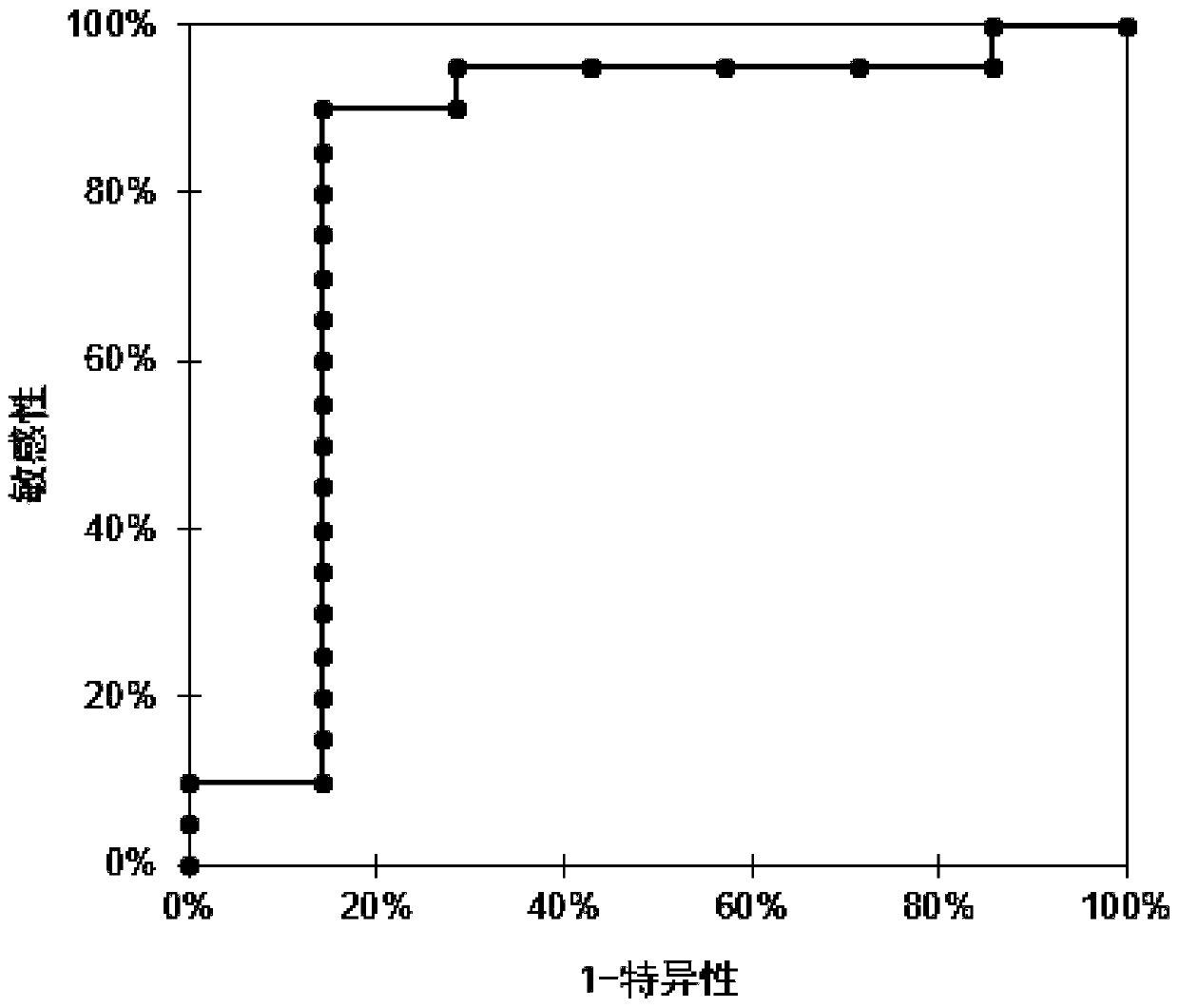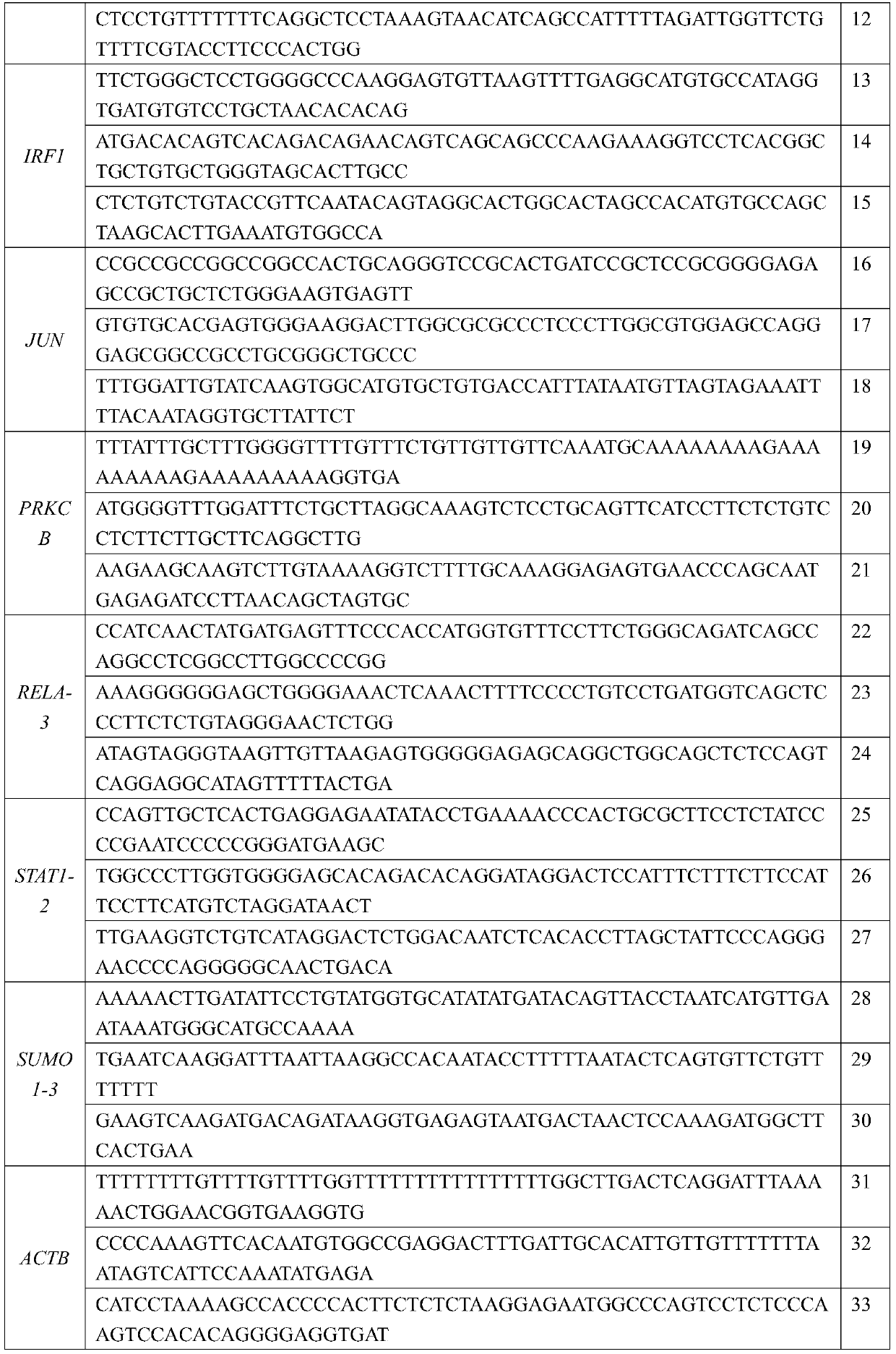Composition for detecting chemoradiotherapy sensitivity of rectal cancers, micro array and computer system
A sensitive, chemoradiotherapy technology, applied in the field of biomedicine, can solve problems such as poor prediction accuracy, and achieve the effects of high specificity, simple analysis method, and quick and easy detection.
- Summary
- Abstract
- Description
- Claims
- Application Information
AI Technical Summary
Problems solved by technology
Method used
Image
Examples
preparation example Construction
[0038] The preparation of the microarray of the present invention can be carried out by known methods. In an exemplary method, it includes designing and synthesizing specific probes for related genes, spraying and solidifying the dissolved and diluted probes on a well-known commercially available aldehyde-based substrate through a gene chip spotter, and preparing them for use in the rectum. Microarray chip for predicting preoperative chemoradiotherapy sensitivity in cancer patients.
[0039] The microarray of the present invention has great advantages in many aspects such as the speed of gene locus detection, the reliability of the detection of medium and low expression levels of target genes, etc., and has a complete and mature quality control process and analysis means, which is fast and simple And has a high degree of accuracy and sensitivity. Therefore, the preoperative chemoradiotherapy sensitivity prediction method for rectal cancer based on microarray detection technol...
Embodiment
[0058] 1. Preparation of microarray chip for preoperative radiotherapy and chemotherapy sensitivity prediction in patients with rectal cancer
[0059] 1. Design and synthesize microarray probes:
[0060] According to the conserved sequences of ABL1, AR, CDK1, HDAC1, IRF1, JUN, PRKCB, RELA-3, STAT1-2, SUMO1-3, ACTB, CSNK1G2, FARP1, GAPDH, RPLP0 genes, design specific probes, the sequences of which are as follows Table 1 shows.
[0061] Table 1 - Probe Information
[0062]
[0063]
[0064]
[0065] 2. Preparation of microarray chips:
[0066] Dissolve the probe in TE Buffer to a suitable concentration, and use the gene chip spotting instrument to spot the sample on the aldehyde substrate (such as the crystal core optical grade substrate produced by Boao Biological Co., Ltd.) in contact mode. The chips were fixed and dried in an oven at 80°C for 2 hours.
[0067] 2. Total RNA extraction and reverse transcription
[0068] 1. Randomly select 27 samples of patients wi...
PUM
 Login to View More
Login to View More Abstract
Description
Claims
Application Information
 Login to View More
Login to View More - R&D
- Intellectual Property
- Life Sciences
- Materials
- Tech Scout
- Unparalleled Data Quality
- Higher Quality Content
- 60% Fewer Hallucinations
Browse by: Latest US Patents, China's latest patents, Technical Efficacy Thesaurus, Application Domain, Technology Topic, Popular Technical Reports.
© 2025 PatSnap. All rights reserved.Legal|Privacy policy|Modern Slavery Act Transparency Statement|Sitemap|About US| Contact US: help@patsnap.com



